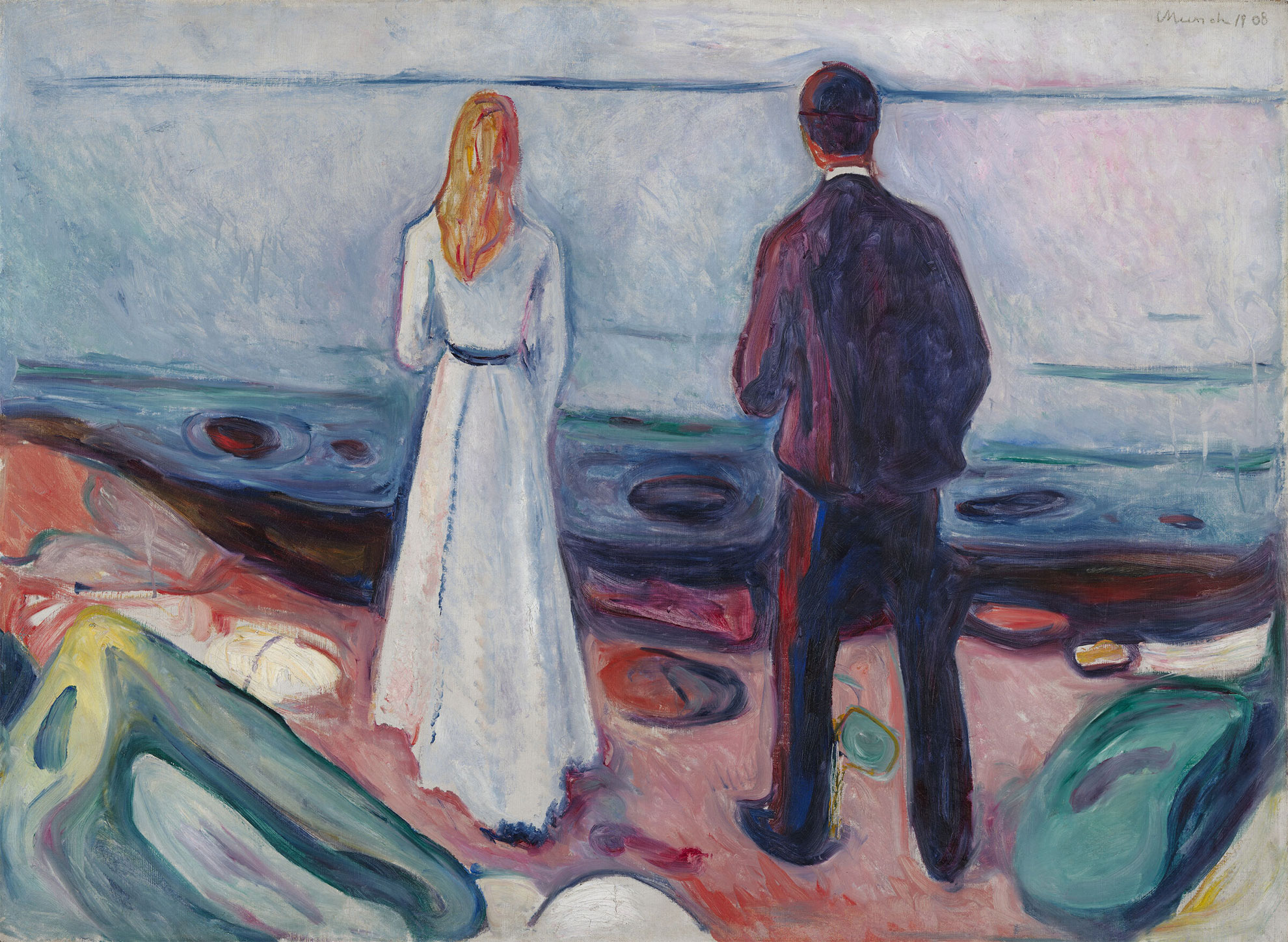An extraordinary gift of 62 prints and two paintings by Edvard Munch, as well as one print by Jasper Johns, from the collection of Philip A. ’37 and Lynn G. Straus was announced by Harvard Art Museums on Tuesday.
The spring 2025 exhibition, “Edvard Munch: Technically Speaking,” will feature many of the recently gifted works.
The bequest is a final act of generosity from the Strauses following a relationship with the museums that began in the 1980s and that includes multiple gifts of artworks over the years; the support of a 1990s-era expansion, renovation, and endowment of the museums’ conservation center; and the endowment of specific conservation and curatorial positions.
The works by Norwegian artist Edvard Munch (1863–1944) in the Strauses’ bequest join an important concentration of paintings and prints by the artist already at Harvard and build upon multiple past gifts and assisted purchases of Munch’s work by the couple — 117 works altogether. The total number of works by the artist in the Harvard Art Museums’ collections is now 142 (eight paintings and 134 prints), constituting one of the largest and most significant collections of works by Munch in the U.S.
The Strauses have been among the Harvard Art Museums’ most generous benefactors. In 1969, the couple purchased their first print by Munch, “Salome” (1903), an acquisition that marked the start of their passion for the artist’s work. Following a commitment to a $7.5 million gift in 1994, the museums’ conservation center — the oldest fine arts conservation treatment, research, and training facility in the U.S. — was renamed the Straus Center for Conservation and Technical Studies. Philip, a New York investment adviser and portfolio manager, passed away in 2004, and their bequest comes to Harvard following Lynn’s passing in 2023. In total, the couple gifted or enabled purchases of 128 works to the Harvard Art Museums over their lifetimes, including works by Max Beckmann, Georges Braque, Alexander Calder, Timothy David Mayhew, and Emil Nolde.
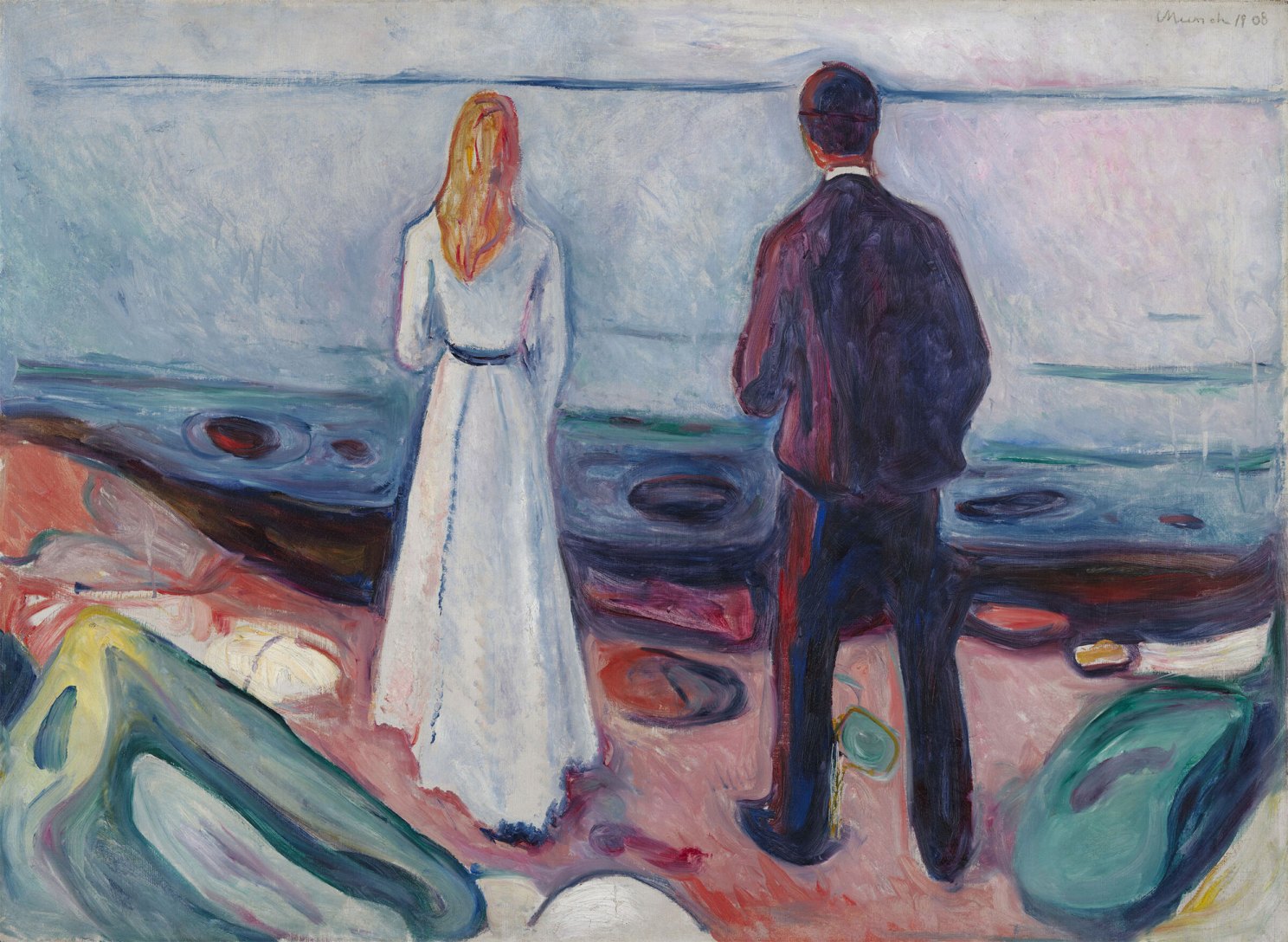
Edvard Munch, “Two Human Beings (The Lonely Ones),” (1906–8). Oil on canvas.
Busch-Reisinger Museum, The Philip and Lynn Straus Collection, 2023.551.
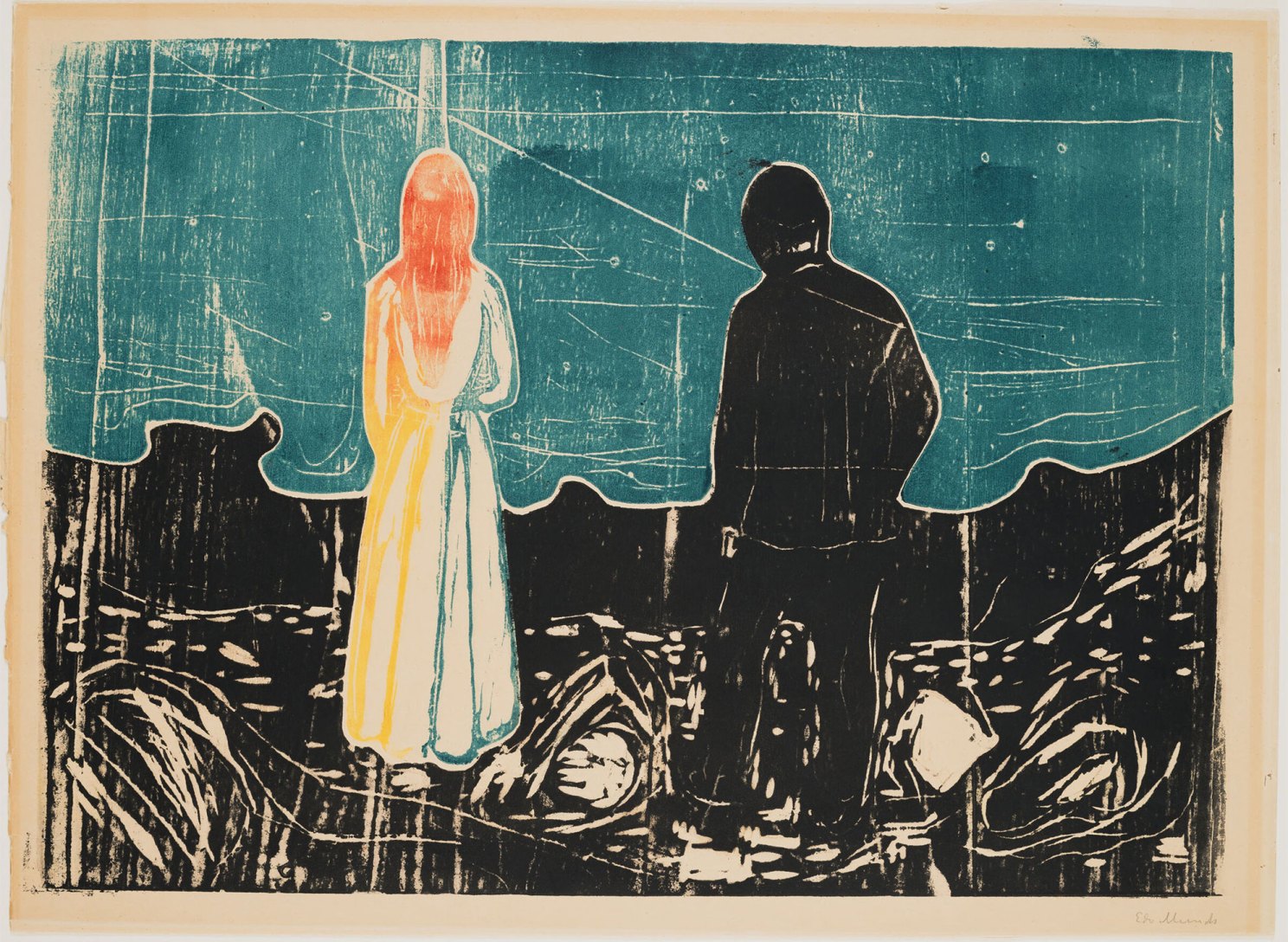
“Two Human Beings (The Lonely Ones)” (1899). Woodcut printed on tan wove paper.
Fogg Museum, The Philip and Lynn Straus Collection, 2023.602.
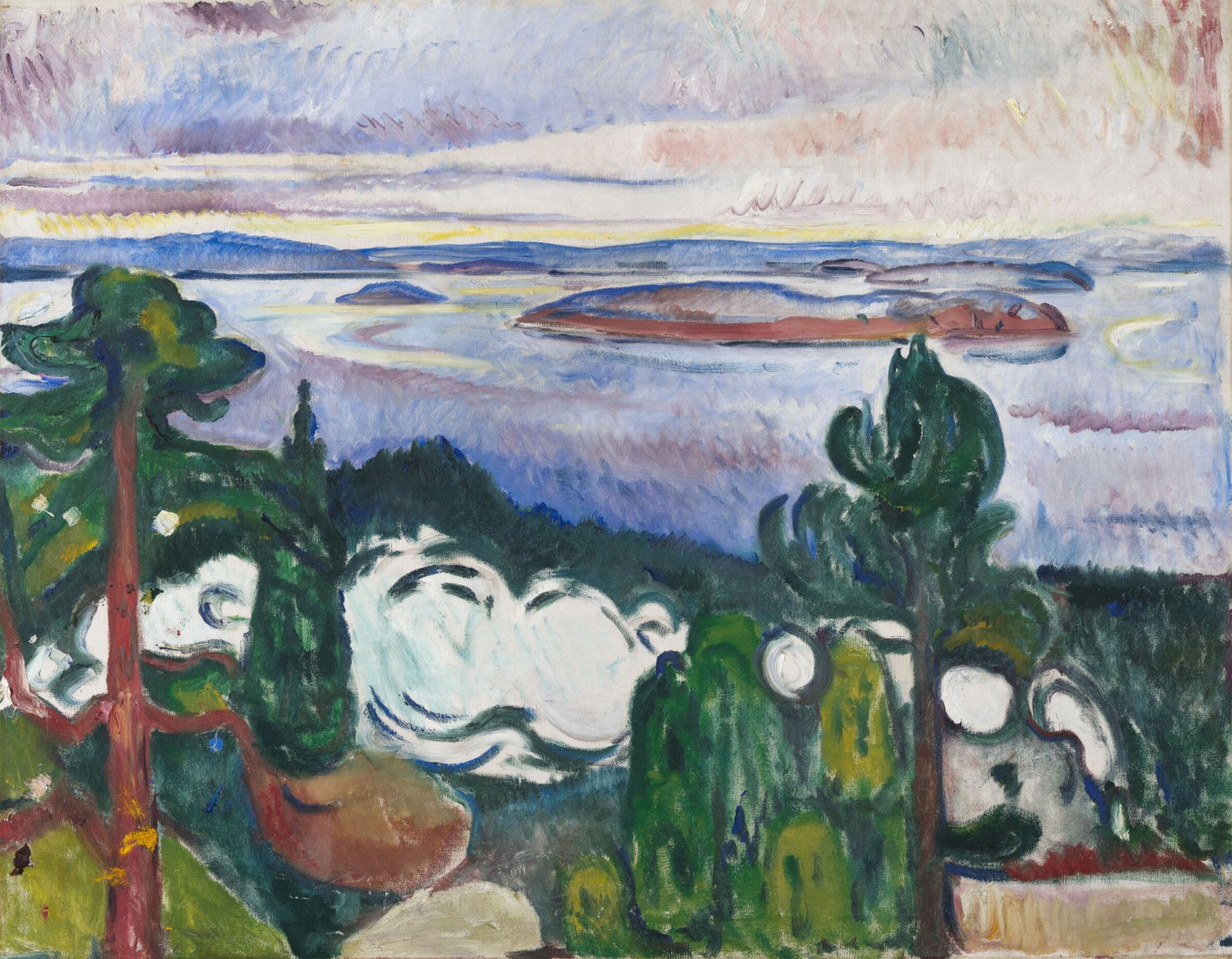
“Train Smoke” (1910) is a landscape unlike those by Munch already in the collection.
Harvard Art Museums/Busch-Reisinger Museum, The Philip and Lynn Straus Collection, 2023.552. Photo: © President and Fellows of Harvard College; courtesy of the Harvard Art Museums
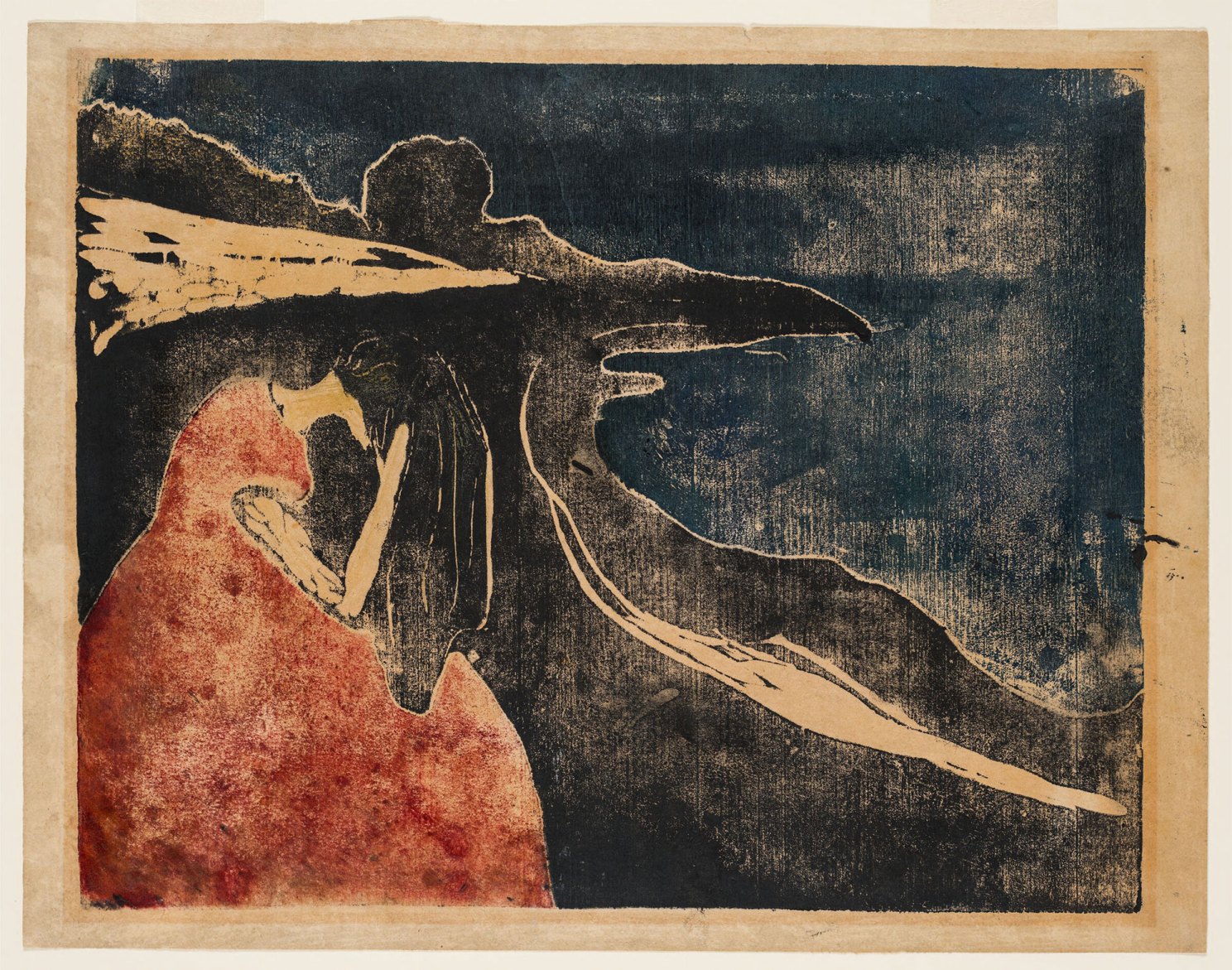
Rare examples of prints that Munch printed himself with his small hand-crank press, including “Melancholy II” (1898).
Harvard Art Museums/Fogg Museum, The Philip and Lynn Straus Collection, 2023.592. Photo: © President and Fellows of Harvard College; courtesy of the Harvard Art Museums
“We are immensely grateful to Philip and Lynn Straus for their generosity and stewardship over these many years,” said Sarah Ganz Blythe, the Elizabeth and John Moors Cabot Director of the Harvard Art Museums. “Their enthusiasm for the work of Edvard Munch ensures generations of students and visitors can experience and study his prints and paintings here in Cambridge. Through their distinct style of collecting Munch’s prints — seeking out and acquiring multiple images of the same theme — they created a collection that affords deep insights into the artist’s practice and is therefore a perfect match for a university museum with a strong teaching and research mission.”
Ganz Blythe continued: “Their support of the conservators and conservation scientists in the Straus Center has had a transformative impact on the numerous fellows who have trained there, as well as provided a facility where every object in our collections can be cared for and scientifically researched.”
The Strauses’ recent bequest includes Munch’s iconic painting “Two Human Beings (The Lonely Ones)” (1906–8) and “Train Smoke” (1910), both of which are now in the collection of the Busch-Reisinger Museum, one of the Harvard Art Museums’ three constituent museums. These paintings join “Winter in Kragerø” (1915) and “Inger in a Red Dress” (1896), previously given to the museum by Lynn in memory of Philip in 2012.
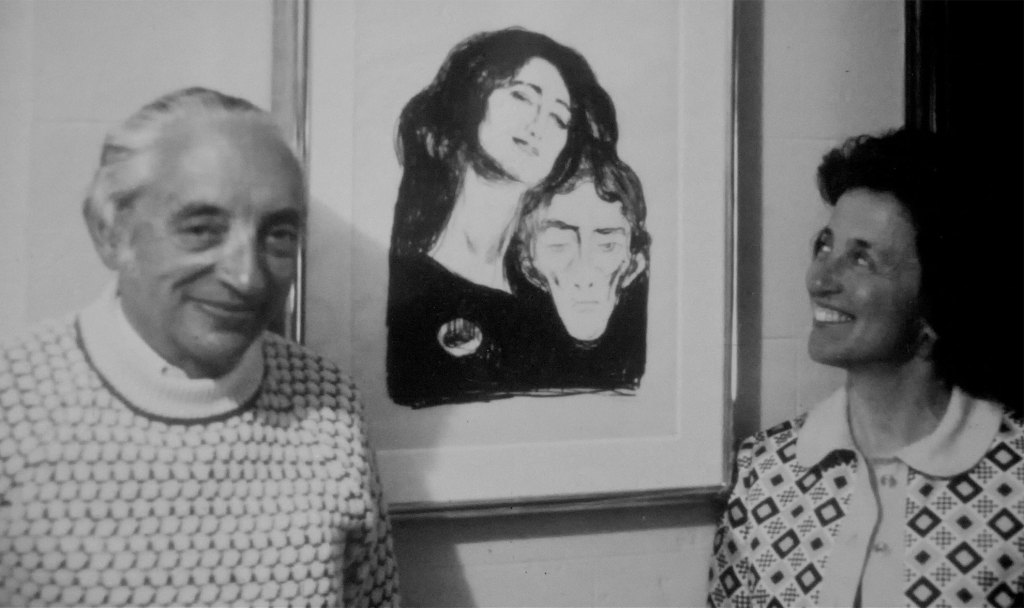
Philip and Lynn Straus with their first Edvard Munch print, “Salome” (1903), c. 1969.
Courtesy Philip A. Straus Jr.
In “Two Human Beings (The Lonely Ones),” a man and woman stand side by side yet still feel isolated from one another, facing toward the sea and away from the viewer, each embedded in a colorfully sedimented landscape. Munch first painted this subject around 1892 and returned to it repeatedly in his printmaking and painting thereafter. “Train Smoke,” which depicts nature disrupted but also dynamically animated by the Industrial Revolution, is a landscape unlike those by Munch already in the collection. Both paintings demonstrate Munch’s experimentation with color and surface texture, through his varied use of thick impasto, diluted paint drips, and even areas of bare canvas, a hallmark of Munch’s artistic legacy.
“It is hard to overestimate the significance of Munch’s painting ‘Two Human Beings (The Lonely Ones).’ Capturing the tension between proximity and distance — spatial as well as emotional — the work addresses the universal theme of the human condition,” said Lynette Roth, the Daimler Curator of the Busch-Reisinger Museum at the Harvard Art Museums. “The Strauses had generously loaned their painting for the inaugural installation of the renovated Harvard Art Museums building that opened in November 2014, and we are thrilled to be able to teach with and display it alongside the other significant paintings from their collection going forward.”
Over the course of 2024, both paintings have undergone cleaning and other treatments by Kate Smith, senior conservator of paintings and head of the Paintings Lab, and Ellen Davis, associate paintings conservator, both in the museums’ Straus Center. “Two Human Beings (The Lonely Ones)” had been varnished at some point in its history, which is not consistent with Munch’s practice of leaving his canvases without a unified glossy surface. “Train Smoke” needed paint stabilization and cleaning to remove atmospheric grime. After careful study, removal of the varnish and grime from the paint surface, and treatment of small areas of paint loss, the paintings are now in closer alignment with their original appearance.
The 62 prints in the Strauses’ recent bequest have entered the collection of the Fogg Museum. The majority are highly prized impressions that Munch exhibited in his lifetime, and they speak to the aesthetic he preferred for the display of his prints: Some of the impressions are cut to the image, and adhered to larger, heavy brown paper, which Munch signed and often dated. Also included are multiple states of single compositions. They showcase the range of techniques the artist used in his printmaking practice: drypoint, etching, lithography, mezzotint, and woodcut, and innovations through the addition of hand-applied color such as watercolor, crayon, and oil, or printing with woodblocks sawn into pieces.
“With this bequest, the Harvard Art Museums have become an important destination for the research of Munch’s prints,” said Elizabeth M. Rudy, the Carl A. Weyerhaeuser Curator of Prints at the Harvard Art Museums. “There are innumerable ways the collection offers opportunities for teaching, exhibition, and further study. Noteworthy for its groups of versions, states, and variations of single compositions, this collection offers wide-ranging insights into Munch’s innovative practice as a printmaker.”
The Jasper Johns print included in the bequest, “Savarin” (1982), is a lithograph and monotype; it depicts a Savarin-brand coffee can filled with paintbrushes of various sizes. The backdrop incorporates the artist’s signature “crosshatch” work of the 1970s, which is represented in other prints by Johns in the museums’ collections. The arm shown at the bottom of the print is a reference to the skeletal arm shown in Munch’s “Self-Portrait” from 1895 — a connection the couple noted by hanging the two prints near each other in their own home.
Visitors are welcome to view the prints and paintings, by appointment, in the Harvard Art Museums’ Art Study Center. The special exhibition “Edvard Munch: Technically Speaking,” on display March 7 to July 27 at the Harvard Art Museums, will include many of the works from the Strauses’ recent bequest as well as from prior gifts. The exhibition will showcase roughly 70 works, with key loans from the Munchmuseet in Oslo, Norway, and will include examples of the artist’s materials used for printmaking.
Source link

